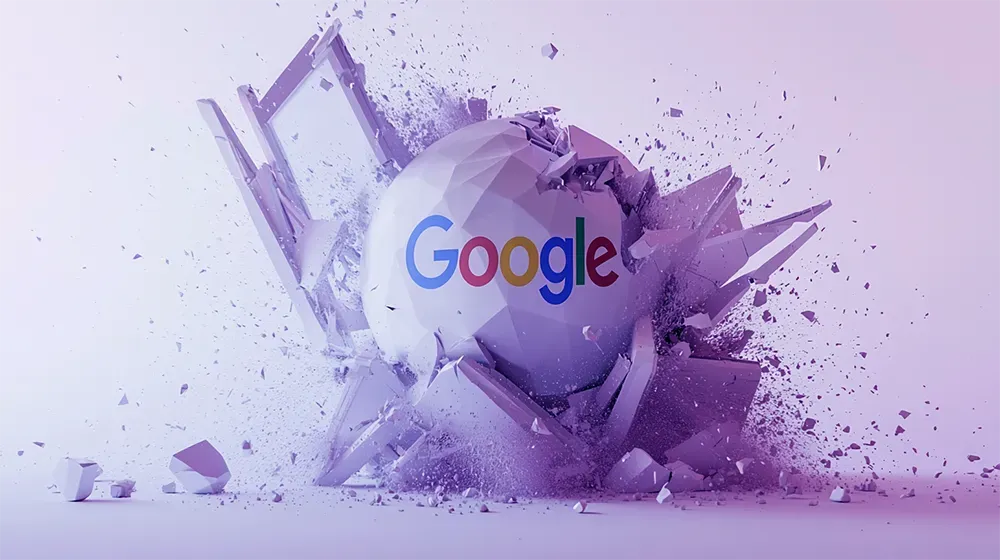Understanding Drones with an Innovation Keynote Speaker's Help

Understanding Drones with an Innovation Keynote Speaker's Help
Drones have become an integral part of our modern world, revolutionizing industries ranging from photography and videography to agriculture and surveillance. These unmanned aerial vehicles have the ability to fly and capture images or videos from vantage points that were once unimaginable. But how exactly do drones work? What makes them so versatile and valuable in various fields? To answer these questions and more, let's dive into the world of drones with the help of an innovation keynote speaker.
Understanding the Basics of Drone Technology
Before we can fully appreciate the capabilities of drones, it's important to understand the technology behind them. At the core of a drone is its flight controller, which acts as its brain. This sophisticated electronic device receives multiple signals from the drone's various sensors, such as GPS and accelerometers, to ensure stability and control during flight.
The flight controller processes data from the sensors in real-time, making rapid adjustments to the drone's motors and propellers to maintain balance and stability. This allows the drone to hover in place, perform precise maneuvers, and respond to external factors such as wind speed and direction.
But the flight controller is just one piece of the puzzle. Another crucial component of a drone is its propulsion system, typically consisting of multiple rotors. By adjusting the speed and direction of these rotors, the drone can maneuver in any desired direction, including vertical takeoff and landing.
The rotors are powered by electric motors, which are controlled by the flight controller. These motors spin the propellers at varying speeds, generating the necessary lift and thrust to keep the drone airborne. The flight controller constantly monitors and adjusts the motor speeds to maintain stability and control.
Furthermore, drones are equipped with high-resolution cameras and other sensors, allowing them to capture stunning aerial footage or collect data in real-time. The cameras on drones are capable of capturing high-definition images and videos, providing a unique perspective from above.
In addition to cameras, drones can be equipped with a variety of other sensors, such as thermal cameras, LiDAR scanners, and multispectral sensors. These sensors enable drones to perform specialized tasks like thermal imaging inspections, 3D mapping, and crop monitoring.
Whether it's for capturing breathtaking landscape shots or surveying crops for precision agriculture, drones offer incredible capabilities in a compact and versatile package. They have revolutionized industries such as filmmaking, aerial photography, search and rescue, and infrastructure inspection.
Moreover, drones have found applications in scientific research, wildlife conservation, and disaster response. They can be used to monitor wildlife populations, study weather patterns, and assess the damage caused by natural disasters.
As drone technology continues to advance, we can expect to see even more impressive capabilities and applications. From autonomous drones that can navigate complex environments to drones that can carry out deliveries, the possibilities are endless.
How an Innovation Keynote Speaker Can Break Down Complex Drone Concepts
While the technology behind drones may seem complex, an innovation keynote speaker excels in simplifying and demystifying these concepts. By breaking down complex jargon and technical details, they are able to convey information in a way that is easy to understand and relatable to a wide audience.
One of the key strengths of an innovation keynote speaker is their ability to connect with their audience. Through engaging storytelling and relatable examples, they are able to paint a vivid picture of how drones can be applied in various industries. This not only makes the content more accessible but also sparks the imagination and curiosity of listeners.
Furthermore, an innovation keynote speaker can provide valuable insights into the latest trends and advancements in drone technology. Whether it's discussing the use of artificial intelligence to enhance autonomous flight capabilities or exploring the potential of swarm drones for large-scale operations, they keep their audience up to date with the ever-evolving world of drones.
Imagine sitting in a packed auditorium, eagerly waiting for the innovation keynote speaker to take the stage. The room is buzzing with anticipation as the lights dim and the speaker's voice booms through the speakers. As they begin their presentation on drones, you can't help but be captivated by their energy and enthusiasm.
They start by explaining the basic principles of drone technology, breaking it down into bite-sized pieces that even a novice can understand. They use relatable analogies, comparing drones to remote-controlled cars or even the beloved childhood toy, the kite. Suddenly, the complex world of drones doesn't seem so intimidating anymore.
But it's not just about simplifying the technical aspects. The innovation keynote speaker goes beyond that, delving into the practical applications of drones in various industries. They share stories of how drones are revolutionizing the delivery industry, making it faster and more efficient. They talk about how drones are being used in agriculture to monitor crop health and optimize irrigation. They even touch on the use of drones in search and rescue missions, where they can cover vast areas in a fraction of the time it would take humans.
As the speaker continues, they delve into the latest trends and advancements in drone technology. They discuss the use of artificial intelligence to enhance autonomous flight capabilities, allowing drones to navigate complex environments with ease. They explore the potential of swarm drones, where multiple drones work together in a coordinated manner to achieve a common goal. The audience is captivated by these cutting-edge concepts, their minds racing with the possibilities.
Throughout the presentation, the innovation keynote speaker keeps the audience engaged with their dynamic storytelling. They share personal anecdotes of their own experiences with drones, recounting the awe-inspiring moments when they witnessed drones in action. These stories not only entertain but also serve as powerful examples of the potential impact of drones in our lives.
By the end of the presentation, the audience is buzzing with excitement. They have been taken on a journey, from the basic principles of drone technology to the forefront of innovation. They leave the auditorium with a newfound appreciation for drones and the possibilities they hold.
So, the next time you find yourself struggling to grasp the complexities of drone technology, consider seeking out an innovation keynote speaker. With their ability to simplify and demystify these concepts, they can help you unlock the potential of drones and inspire you to embrace the future of technology.
The Role of Drones in Modern Innovation
As innovation continues to drive progress in various industries, drones have emerged as a key player in modern-day innovation. Their ability to gather data, capture unique perspectives, and perform tasks efficiently has opened up new possibilities for businesses and organizations worldwide.
For instance, in the agricultural sector, drones equipped with hyperspectral cameras can analyze crop health and identify areas requiring attention. This enables farmers to optimize their resources and increase yields while reducing the use of pesticides and fertilizers. Drones can fly over vast fields, capturing detailed images and data that can be analyzed to detect early signs of disease, nutrient deficiencies, or irrigation issues. With this information, farmers can take targeted actions to address these problems, resulting in healthier crops and higher productivity. Additionally, drones can also be used to distribute beneficial insects or spray precise amounts of fertilizers or pesticides, reducing the environmental impact and improving overall sustainability.
In construction, drones have revolutionized the way projects are planned and executed. They can provide accurate and up-to-date aerial surveys, allowing project managers to make informed decisions and improve efficiency. With high-resolution cameras and advanced mapping software, drones can capture detailed images and create 3D models of construction sites, enabling architects, engineers, and contractors to visualize the project from different angles and identify potential issues before they arise. This not only saves time and money but also enhances safety by minimizing the need for workers to access hazardous areas. Furthermore, drones equipped with thermal imaging cameras can detect heat leaks in buildings, helping to improve energy efficiency and reduce carbon emissions.
Moreover, the entertainment industry has also benefited greatly from the use of drones. They have opened up new possibilities for filmmakers and photographers to capture breathtaking aerial shots without the need for helicopters or cranes. Drones equipped with high-quality cameras and stabilizing technology can smoothly navigate through the air, capturing stunning visuals from unique perspectives. This not only reduces costs but also enables more creativity and flexibility in storytelling. Whether it's a sweeping panoramic shot of a picturesque landscape or a dynamic chase sequence through narrow streets, drones have become an indispensable tool for filmmakers and photographers to bring their artistic visions to life.
Furthermore, drones have also found applications in search and rescue operations, environmental monitoring, infrastructure inspections, and delivery services. In search and rescue missions, drones equipped with thermal cameras and GPS technology can cover large areas quickly, helping to locate missing persons or assess the extent of a disaster. In environmental monitoring, drones can be used to survey wildlife populations, monitor deforestation, or track changes in ecosystems. For infrastructure inspections, drones can access hard-to-reach areas such as bridges, towers, or power lines, providing detailed visual inspections and reducing the need for human workers to perform dangerous tasks. Additionally, companies like Amazon and Google are exploring the use of drones for delivery services, aiming to revolutionize the way goods are transported and delivered.
An Innovation Keynote Speaker's Insight into the Future of Drones
With technology advancing at an exponential rate, the future of drones looks incredibly promising. An innovation keynote speaker can provide valuable insights into the emerging trends and potential applications of drones in the years to come.
One area that is receiving increasing attention is the use of drones for delivery services. Companies like Amazon and Google are exploring the possibility of using drones to deliver packages directly to customers' doorsteps. This has the potential to revolutionize the logistics industry, offering faster and more efficient delivery options.
Additionally, the development of autonomous drones opens up exciting possibilities for industries such as search and rescue, disaster management, and surveillance. These drones can navigate challenging environments and conduct missions with minimal human intervention, enhancing safety and efficiency in critical operations.
Practical Applications and Opportunities in the Drone Industry
As the drone industry continues to grow, numerous practical applications and opportunities are emerging for individuals and businesses alike. From starting a drone photography business to becoming a certified drone pilot, the possibilities are limitless.
For aspiring entrepreneurs, the drone industry provides immense potential for innovation and creativity. From developing new drone technologies to creating software solutions for data analysis and visualization, there are countless opportunities to make an impact in this rapidly expanding market.
Furthermore, the demand for skilled drone pilots and technicians is on the rise. Many industries, including film production, surveying, and inspections, require professionals who can operate drones safely and effectively. In this context, an innovation keynote speaker can shed light on the skills and certifications necessary to excel in the drone industry and discuss potential career paths and opportunities.
Conclusion
In conclusion, drones have transformed industries and opened up new possibilities for innovation. Understanding the technology and applications of drones can seem daunting, but with the help of an innovation keynote speaker, these concepts become accessible and exciting.
Whether you're a professional exploring new avenues for your business or an enthusiast with a passion for the latest technological advancements, embracing the world of drones can be both rewarding and captivating. So, join us in unlocking the full potential of drones with the guidance of an innovation keynote speaker and witness the future unfold from a whole new perspective.
Frequently Asked Questions
1. How do drones work?
Drones work by using a flight controller as their brain, which receives signals from various sensors to ensure stability and control during flight. The flight controller processes data in real-time and adjusts the drone's motors and propellers to maintain balance and stability. The propulsion system, consisting of multiple rotors powered by electric motors, generates lift and thrust to keep the drone airborne.
2. What are the applications of drones?
Drones have a wide range of applications, including photography, videography, agriculture, surveillance, search and rescue, infrastructure inspection, scientific research, wildlife conservation, and disaster response. They can capture high-resolution images and videos, perform specialized tasks like thermal imaging inspections and 3D mapping, and cover vast areas quickly for monitoring or assessment purposes.
3. How can an innovation keynote speaker help in understanding drones?
An innovation keynote speaker can simplify and demystify the complex concepts of drone technology. They can break down technical jargon, provide relatable examples, and engage the audience through storytelling. They also offer insights into the latest trends and advancements in drone technology, keeping the audience informed and inspired about the future possibilities of drones.
Contact an Innovation Keynote Speaker for Your Event
If you're ready to take your next event to a whole new level of engagement and inspiration, look no further than Dr Mark van Rijmenam. With his ability to simplify and demystify complex concepts like drone technology, Dr van Rijmenam captivates his audiences, sparking their imagination and curiosity. His dynamic storytelling and relatable examples paint a vivid picture of the potential impact of the latest technological advancements, making your event a truly memorable experience. Don't miss out on this opportunity to inspire your audience and unlock the full potential of the future of technology. Simply complete the form below and we will be in touch within 24 hours to discuss how Dr Mark van Rijmenam can transform your event.Thanks for your inquiry
We have sent you a copy of your request and we will be in touch within 24 hours on business days.
If you do not receive an email from us by then, please check your spam mailbox and whitelist email addresses from @thedigitalspeaker.com.
In the meantime, feel free to learn more about The Digital Speaker here.
Or read The Digital Speaker's latest articles here.





